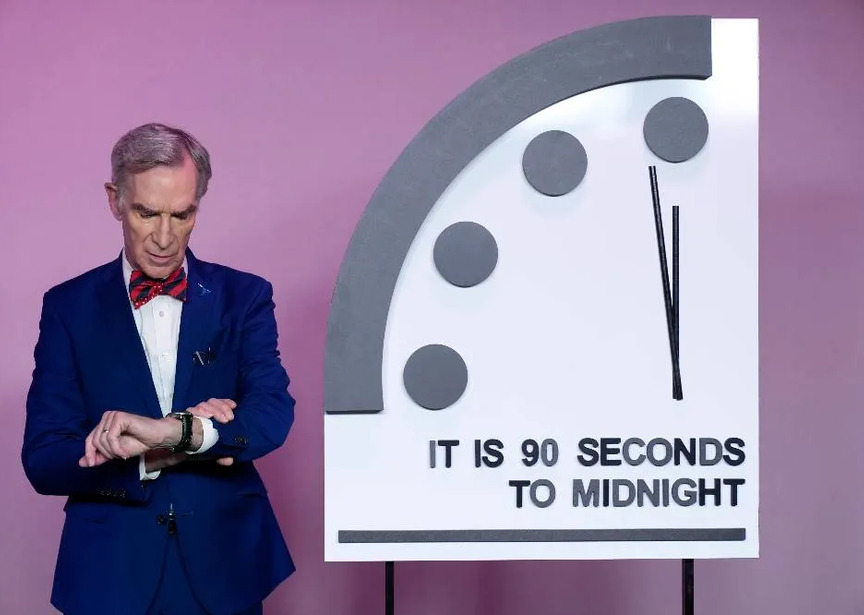
The Doomsday Clock, originally created by scientists at the University of Chicago in 1947, serves as a symbol of the world's proximity to nuclear war and apocalypse. Today, the clock stands at "two minutes to midnight," reminding us of the potential catastrophe that looms.
In its inception, the Doomsday Clock set the time at "seven minutes to midnight," reflecting the growing awareness of the dangers of nuclear weapons. Over the years, the hands of the clock have moved closer or further from midnight to reflect changes in the global political and military landscape. The clock serves as a reminder to governments of the importance of nuclear restraint and diplomatic resolutions to conflicts.
The current setting of "two minutes to midnight" signifies an extremely high level of global tension. Political analyst Kirill Kotov explains that the Doomsday Clock is not a prophecy, but rather a warning of humanity approaching a dangerous threshold. The clock itself has no direct impact but aims to raise awareness and encourage contemplation of the consequences.
Experts, including Kirill Kotov, believe that the Doomsday Clock is unlikely to ever reach midnight. Midnight symbolizes an apocalypse, and even if we approach this point, there is still hope to find a way to prevent it. Although the time may seem close, a catastrophe is not inevitable. The clock serves as a mobilization tool to emphasize the importance of peaceful conflict resolution and to remind us that the future of humanity depends on our actions.
The Doomsday Clock is not a magical artifact or a prophecy. It serves as a reminder that the future of humanity is in our hands. Each movement of the clock's hands is a signal that the world is becoming more tense. However, we still have the opportunity to defuse the situation and find peaceful solutions. When the clock shows "two minutes to midnight," it is essential to remember that we can prevent a catastrophe by actively working towards a safe and peaceful future.
It is vital to remember that even when the clock shows "two minutes to midnight," we have the power to prevent a disaster. The key is to not remain indifferent and instead actively strive towards creating a safe and peaceful future. While the process may seem irreversible, there is still room for positive change.



















